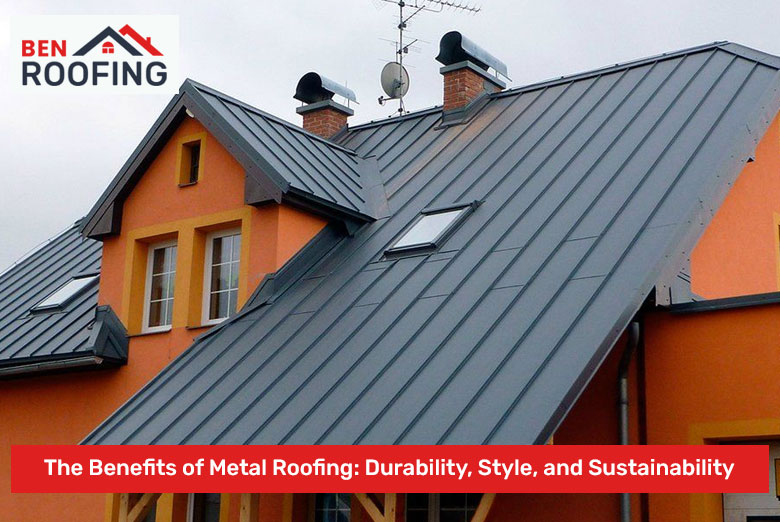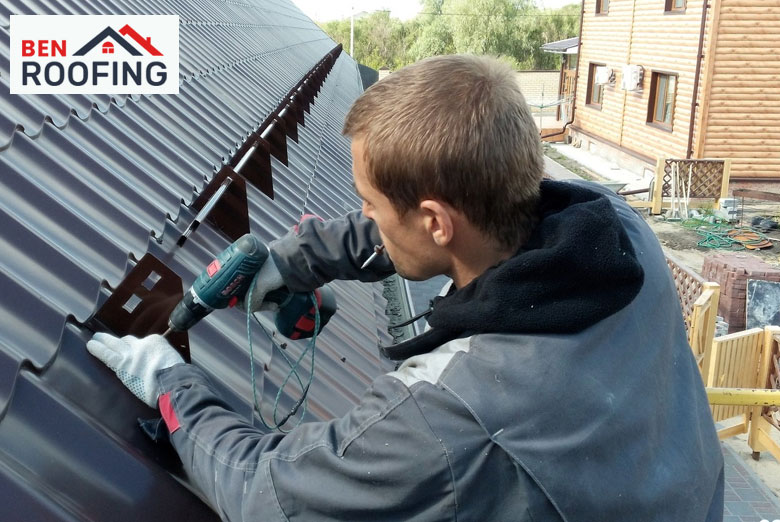The Benefits of Metal Roofing: Durability, Style, and Sustainability
As homeowners and builders increasingly seek roofing solutions that offer longevity, aesthetic appeal, and environmental benefits, metal roofing has emerged as a frontrunner in the construction industry. Once primarily associated with industrial and agricultural buildings, metal roofing has undergone a renaissance, evolving into a versatile and attractive option for residential and commercial structures alike. The advancements in manufacturing techniques and material science have propelled metal roofing to new heights, offering a compelling combination of durability, style, and sustainability. This roofing option not only provides superior protection against the elements but also contributes to energy efficiency and reduces the overall environmental impact of buildings.
As climate change considerations and long-term value become increasingly important factors in construction decisions, metal roofing stands out as a solution that addresses these concerns while offering a wide range of design possibilities. From traditional standing seam profiles to tiles that mimic classic roofing materials, metal roofing systems cater to diverse architectural styles and personal preferences, making them a versatile choice for both new construction and renovation projects.

Unmatched Durability
One of the most significant advantages of metal roofing is its exceptional durability, which far surpasses that of many traditional roofing materials.
Longevity
Metal roofs are renowned for their long lifespan, often lasting 50 years or more with proper maintenance. This longevity is due to several factors:
- Resistance to weathering and UV radiation
- Imperviousness to rot, mildew, and insect damage
- Ability to withstand extreme temperatures without degradation
The longevity of metal roofs not only provides peace of mind for property owners but also contributes to reduced waste in landfills, as fewer roof replacements are needed over the life of a building.
Weather Resistance
Metal roofing excels in protecting buildings from various weather conditions:
- High wind resistance, with some systems rated for winds up to 140 mph
- Excellent performance in heavy rain and snow, with smooth surfaces that shed precipitation efficiently
- Superior hail resistance compared to many traditional roofing materials
These weather-resistant properties make metal roofing an ideal choice for regions prone to severe weather events, helping to minimize storm damage and reduce insurance claims.
Fire Resistance
Many metal roofing systems carry a Class A fire rating, the highest level of fire resistance for roofing materials. This rating indicates that the roofing material:
- Is effective against severe fire exposure
- Does not readily ignite when exposed to fire
- Does not spread fire across its surface
The fire-resistant properties of metal roofing can enhance the overall safety of a building and may even lead to reduced insurance premiums in some cases.
Aesthetic Versatility
Gone are the days when metal roofing was limited to corrugated panels on barns and warehouses. Today’s metal roofing offers a wide range of aesthetic options to complement any architectural style.
Variety of Styles
Metal roofing is available in numerous styles, including:
- Standing seam panels for a sleek, modern look
- Metal shingles that mimic the appearance of traditional materials like slate or wood shakes
- Tile profiles that resemble clay or concrete tiles
- Corrugated panels for an industrial or rustic aesthetic
This variety allows architects and homeowners to choose a metal roofing style that enhances the overall design of the building while providing the benefits of metal as a material.
Color Options
Metal roofing comes in an extensive palette of colors, from natural metallic finishes to vibrant hues:
- Traditional metal finishes like copper, zinc, and stainless steel
- Earth tones that blend with natural surroundings
- Bold colors for making a statement or complementing specific architectural features
- Cool roof coatings in light colors to enhance energy efficiency
Many metal roofing systems also feature high-quality paint finishes that resist fading and chalking, maintaining their appearance for decades.
Texture and Finish
Advancements in manufacturing techniques have allowed for the creation of metal roofing with various textures and finishes:
- Smooth finishes for a contemporary look
- Embossed patterns that add depth and visual interest
- Stone-coated finishes that provide additional texture and color variation
- Matte finishes for a subdued appearance
These options enable metal roofing to adapt to diverse architectural styles, from traditional to ultra-modern.

Energy Efficiency
Metal roofing contributes significantly to the energy efficiency of buildings, helping to reduce heating and cooling costs while minimizing environmental impact.
Solar Reflectance
Many metal roofing systems are designed to reflect a high percentage of solar radiation:
- Cool metal roofing can reflect up to 70% of the sun’s rays
- This reflectivity reduces heat gain in the building, lowering cooling costs
- Some metal roofing products meet or exceed ENERGY STAR® requirements for solar reflectance
The high solar reflectance of metal roofing is particularly beneficial in warm climates, where it can significantly reduce the urban heat island effect in densely populated areas.
Thermal Emittance
In addition to reflecting solar radiation, metal roofing typically has high thermal emittance:
- Thermal emittance refers to the roof’s ability to release absorbed heat
- High emittance helps the roof cool quickly once the sun sets
- This property contributes to reduced cooling needs during evening hours
The combination of high solar reflectance and thermal emittance makes metal roofing an excellent choice for energy-efficient building design.
Insulation Compatibility
Metal roofing systems can be installed in ways that enhance overall building insulation:
- Above-sheathing ventilation can be incorporated to reduce heat transfer into the attic space
- Some metal roofing systems allow for the addition of above-roof insulation without changing the roof’s appearance
- The air space between the metal roofing and the roof deck can act as an additional insulating layer
These insulation benefits contribute to year-round energy savings, reducing both heating and cooling costs.
Sustainability
As environmental concerns become increasingly important in construction decisions, metal roofing stands out for its sustainability features.
Recyclability
Metal roofing is one of the most environmentally friendly roofing options due to its high recyclability:
- Most metal roofing contains a significant percentage of recycled material
- At the end of its long life, metal roofing is 100% recyclable
- Recycling metal roofing reduces the demand for raw materials and energy in production
This closed-loop recycling capability significantly reduces the environmental impact of metal roofing compared to many other roofing materials.
Reduced Landfill Waste
The longevity and recyclability of metal roofing contribute to a significant reduction in landfill waste:
- Fewer roof replacements over time mean less roofing material ends up in landfills
- When replacement is eventually needed, the old metal roofing can be recycled rather than discarded
- Some metal roofing can be installed over existing roofs, eliminating the need to tear off and dispose of old roofing materials
This reduction in waste aligns with the growing emphasis on sustainable building practices and circular economy principles.
Water Conservation
Metal roofing can play a role in water conservation efforts:
- The smooth surface of metal roofing makes it ideal for rainwater harvesting systems
- Collected rainwater can be used for irrigation or other non-potable purposes, reducing demand on municipal water supplies
- Some metal roofing finishes are designed to be safe for rainwater collection, ensuring the water remains uncontaminated
In areas prone to water scarcity, this feature of metal roofing can contribute to more sustainable water management practices.

Low Maintenance
The durability and resilience of metal roofing translate into low maintenance requirements, saving time and resources over the life of the roof.
Minimal Upkeep
Metal roofing requires less frequent maintenance compared to many traditional roofing materials:
- Resistant to cracking, curling, and peeling that often affect asphalt shingles
- No need for regular treatments to prevent rot or insect infestation
- Smooth surface sheds debris easily, reducing the buildup of leaves and other materials
This reduced maintenance need can result in significant long-term savings and convenience for property owners.
Easy Cleaning
When cleaning is necessary, metal roofing is relatively easy to maintain:
- Most dirt and debris can be removed with simple washing
- Algae and moss are less likely to grow on metal surfaces
- Many metal roofing finishes are designed to resist staining and discoloration
The ease of cleaning helps maintain the roof’s appearance and performance with minimal effort.
Long-Term Performance
The low maintenance nature of metal roofing contributes to its long-term performance:
- Fewer repairs and interventions are needed over the life of the roof
- The roof’s protective and energy-efficient properties remain consistent for decades
- Regular inspections can easily identify and address any issues before they become significant problems
This sustained performance ensures that the benefits of metal roofing continue to be realized throughout its lifespan.
Metal roofing offers a compelling combination of benefits that address many of the key concerns in modern construction and home improvement. Its exceptional durability provides long-term protection and value, while its aesthetic versatility allows it to enhance the appearance of any building style. The energy efficiency of metal roofing contributes to reduced environmental impact and lower operating costs, aligning with the growing emphasis on sustainable building practices. Furthermore, the recyclability and low maintenance requirements of metal roofing make it an environmentally responsible and practical choice for conscious consumers and builders.
As the construction industry continues to evolve towards more sustainable and resilient building practices, metal roofing is likely to play an increasingly prominent role. Its ability to withstand severe weather events, contribute to energy efficiency, and reduce environmental impact positions metal roofing as a forward-thinking solution for the challenges of climate change and resource conservation.
For homeowners, builders, and architects looking to combine durability, style, and sustainability in their residential roofing choices, metal roofing presents an option that not only meets these criteria but often exceeds expectations. As awareness of its benefits grows and manufacturing techniques continue to advance, metal roofing is poised to become an even more popular and innovative solution in the years to come.
